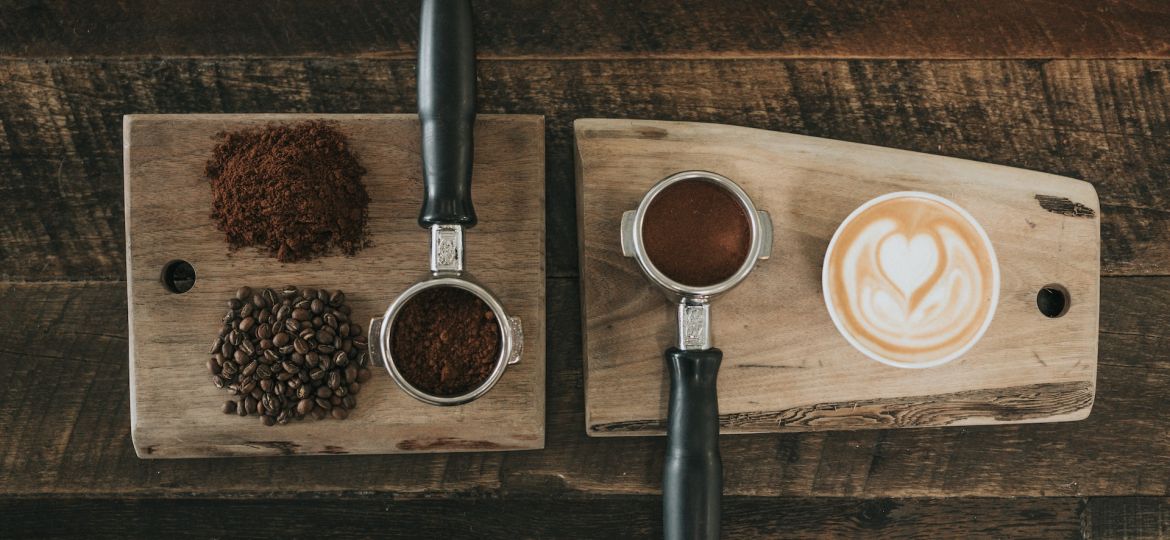
Espresso Roast Coffee Beans are specifically roasted to achieve a flavor profile that enhances the espresso brewing method. This roast level brings out a richer, more pronounced taste that is ideal for espresso, which is brewed under high pressure and serves as the foundation for various coffee drinks. Espresso beans are generally roasted longer than regular coffee beans, leading to a darker appearance and a shiny surface due to the oils released during roasting.
Espresso roast coffee beans are popular among coffee aficionados for their robust flavor and ability to create a rich, creamy crema—the golden layer of foam on top of a freshly brewed espresso. Their popularity stems not only from the depth of flavor they provide but also from their versatility in creating both straight espresso shots and milk-based drinks like lattes and cappuccinos.
Key Takeaways on Espresso Roast Coffee Beans
- Importance of Roast Level: The roast level of espresso beans is crucial as it directly affects the flavor and texture of the espresso. A darker roast typically yields a stronger, more caramelized flavor, which stands up well to the intense brewing process of espresso machines.
- Impact of Bean Origin and Processing: The origin and processing of the coffee beans also play significant roles in the quality of espresso. Beans from different regions bring unique flavors, while the processing method (wet or dry) can influence the bean’s acidity and body.
Tips for Selecting Espresso Roast Beans
When selecting espresso roast coffee beans, consider the flavor profile you prefer:
- Bold and Intense: Look for beans roasted to a darker level.
- Fruity and Bright: Choose lighter roasts if you enjoy more acidity and vibrant flavors.
- Balanced and Smooth: Medium roasts can offer a nice middle ground with both richness and subtlety.
Top Recommended Espresso Roast Coffee Beans for 2024
For those looking to try some of the best options available, here are a few recommendations for 2024:
- Classic Italian Roasts: Known for their well-balanced flavor and excellent crema production.
- Single-Origin Beans: These can provide unique tasting experiences that highlight the characteristics of their specific growing region.
- Blends: Designed to achieve a consistent flavor that is versatile for both straight shots and mixed coffee drinks.
Roasting Process for Espresso Beans
Espresso roast coffee beans undergo a specific roasting process that is geared towards creating a bean that can perform well under the high pressures of espresso machines. The roasting is typically taken to a dark level, which not only darkens the beans but also oils them slightly on the surface.
This process develops a rich, bold flavor profile that is less acidic and has more body compared to lighter roasts. The goal is to maximize the caramelization of the sugars in the bean, which enhances the natural sweetness and minimizes the acidity.
Flavor, Acidity, and Body Differences
Compared to lighter roasts, espresso roast coffee beans offer a more pronounced flavor that is robust and full-bodied. These beans are less acidic, which allows the natural bitter and chocolatey notes to come forward, making them ideal for the concentrated brewing method of espresso. The body is also heavier, providing a creamy, thick texture that holds up well with added milk or cream.
Factors to Consider
When choosing espresso roast coffee beans, several factors need consideration:
- Origin: The geographical origin of the beans affects flavor. Beans from Africa might offer floral and fruity notes, while South American beans typically present nutty and chocolatey flavors.
- Freshness: Freshness is crucial in coffee beans. Look for beans with a recent roast date to ensure you’re getting the most flavor and aroma.
- Roast Date: Beans should be used within a few weeks of their roast date for peak flavor, especially for espresso where freshness can significantly influence the quality of the crema.
Recommendations for Espresso Drinks
- Straight Shots: For those who prefer straight shots of espresso, a single-origin bean with a distinct flavor profile can be intriguing and satisfying.
- Milk-Based Beverages: For lattes and cappuccinos, choosing a blend with a balanced, robust flavor ensures that the espresso can punch through the milk without being overwhelmed.
Popular Espresso Roast Coffee Bean Brands and Reviews
Espresso enthusiasts often find themselves choosing between Arabica and Robusta beans, or blends of both. Arabica beans are prized for their sweet, complex flavor profiles and higher acidity, making them ideal for those who enjoy a nuanced cup of espresso. Robusta beans, on the other hand, offer a stronger, more assertive flavor with a creamy body and higher caffeine content, which can be perfect for a powerful espresso shot.
Lavazza
Lavazza, one of the most recognized coffee brands worldwide, is famed for its espresso roasts that beautifully balance robustness and flavor. Their blends often combine both Arabica and Robusta beans, achieving a full-bodied espresso with rich crema and a lingering satisfying finish. The flavor profiles typically include chocolate and dark fruit notes, making them versatile for both straight espresso shots and milk-based drinks.
Volcanica
Volcanica Coffee specializes in gourmet beans from volcanic regions around the world, which provides a unique mineral-rich environment that coffee plants thrive in. Their espresso roast options often feature exotic blends that offer distinct floral and fruity notes, setting them apart in the espresso category. These beans are typically darker roasted to bring out a deeper, more caramelized flavor, ideal for those who appreciate a bold espresso.
Illy
Illy is renowned for its smooth, rich, and well-rounded espresso blends, predominantly using high-quality Arabica beans. Their espresso roasts are famous for a balanced flavor profile that includes notes of chocolate, nuts, and fruits, with just the right level of acidity. Illy’s consistency in blend quality makes it a favorite among traditional espresso lovers who value a classic espresso experience.
Brewing Techniques and Tips for Espresso Roast Coffee Beans
For the best espresso, every step in the brewing process is crucial. Grinding should be fine enough to create a slow-moving espresso shot, typically lasting about 25-30 seconds. Tamping needs to be firm and even, applying around 30 pounds of pressure to pack the grounds evenly.
This prevents water from channeling through the coffee unevenly during extraction, which should result in a rich, golden crema and a balanced shot. If your espresso comes out too quickly, consider a finer grind; if it’s too slow, a coarser grind might be needed.
Avoiding Common Brewing Mistakes
One common mistake is using stale coffee beans, which can drastically reduce the quality of the espresso. Always use fresh beans and grind them just before brewing. Overpacking the coffee grounds or tamping too hard can also obstruct water flow, leading to an over-extracted shot. Ensure your espresso machine is properly maintained and clean, as old residues can alter the taste of your espresso.
FAQs
Storing Espresso Beans
Keep espresso beans in a cool, dark place in an airtight container. Avoid refrigeration as it can introduce moisture and affect the beans’ oils.
Caffeine Content Differences
Espresso beans generally have a higher caffeine concentration per volume compared to regular coffee due to the extraction method but remember that a standard serving size of espresso is much smaller.
Suitability for Various Coffee Machines
Espresso roast beans are best used in espresso machines. They can be used in other brewing methods but may produce a very strong and sometimes bitter flavor if not adjusted accordingly.
Final Thoughts
Espresso roast coffee beans are the backbone of rich, flavorful espresso shots and are versatile enough for both straight and milk-based beverages. Choosing the right beans, understanding their characteristics, and mastering the brewing process are key to achieving cafe-quality espresso at home.









